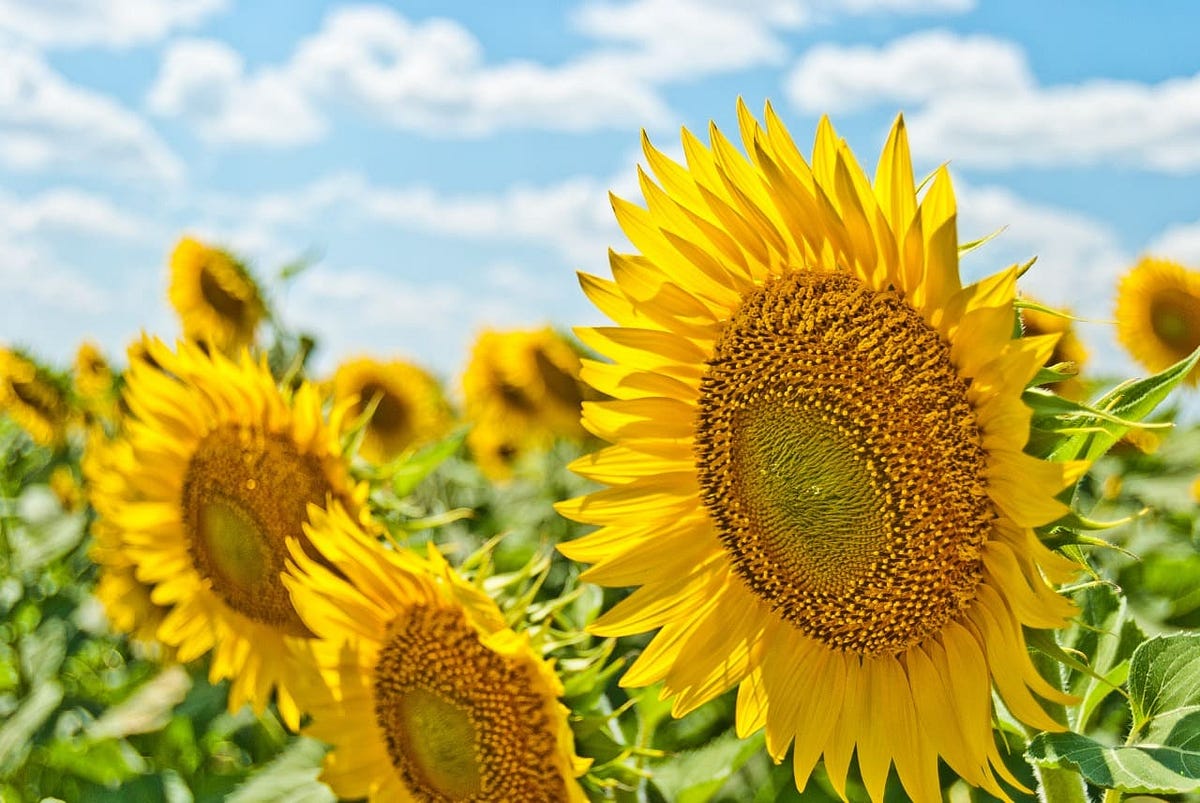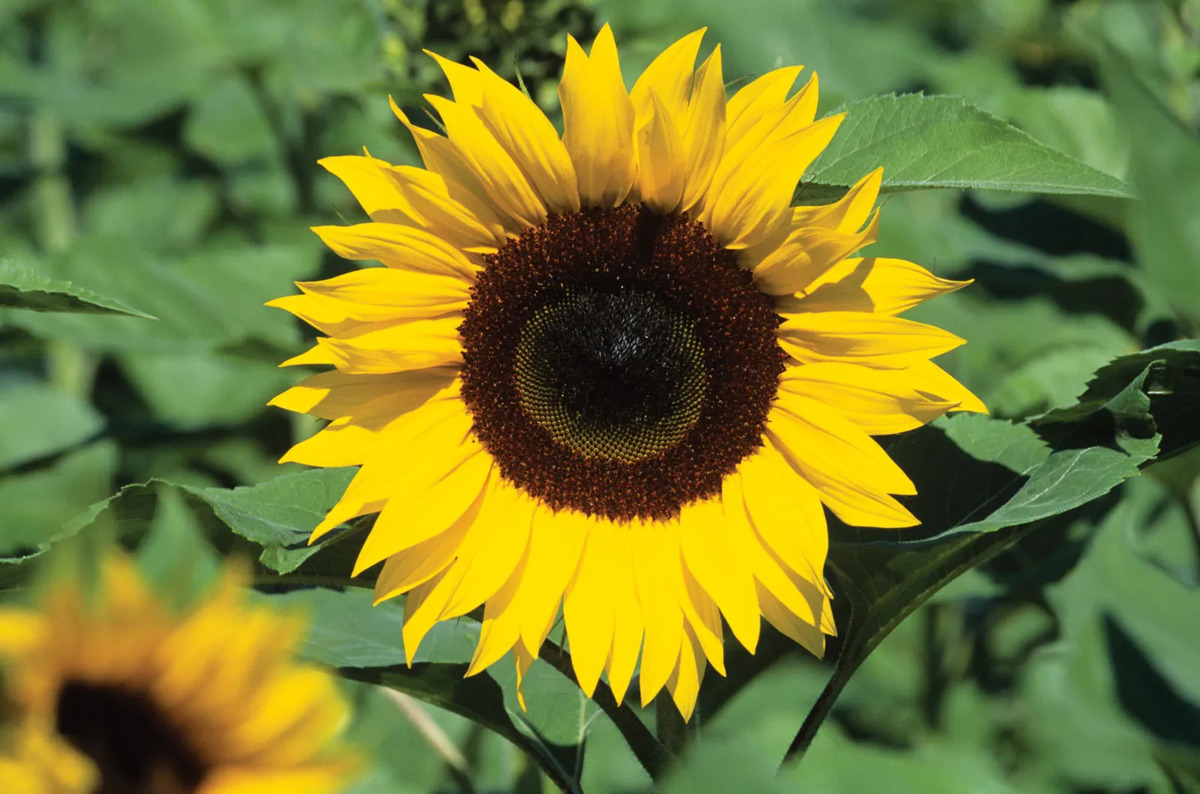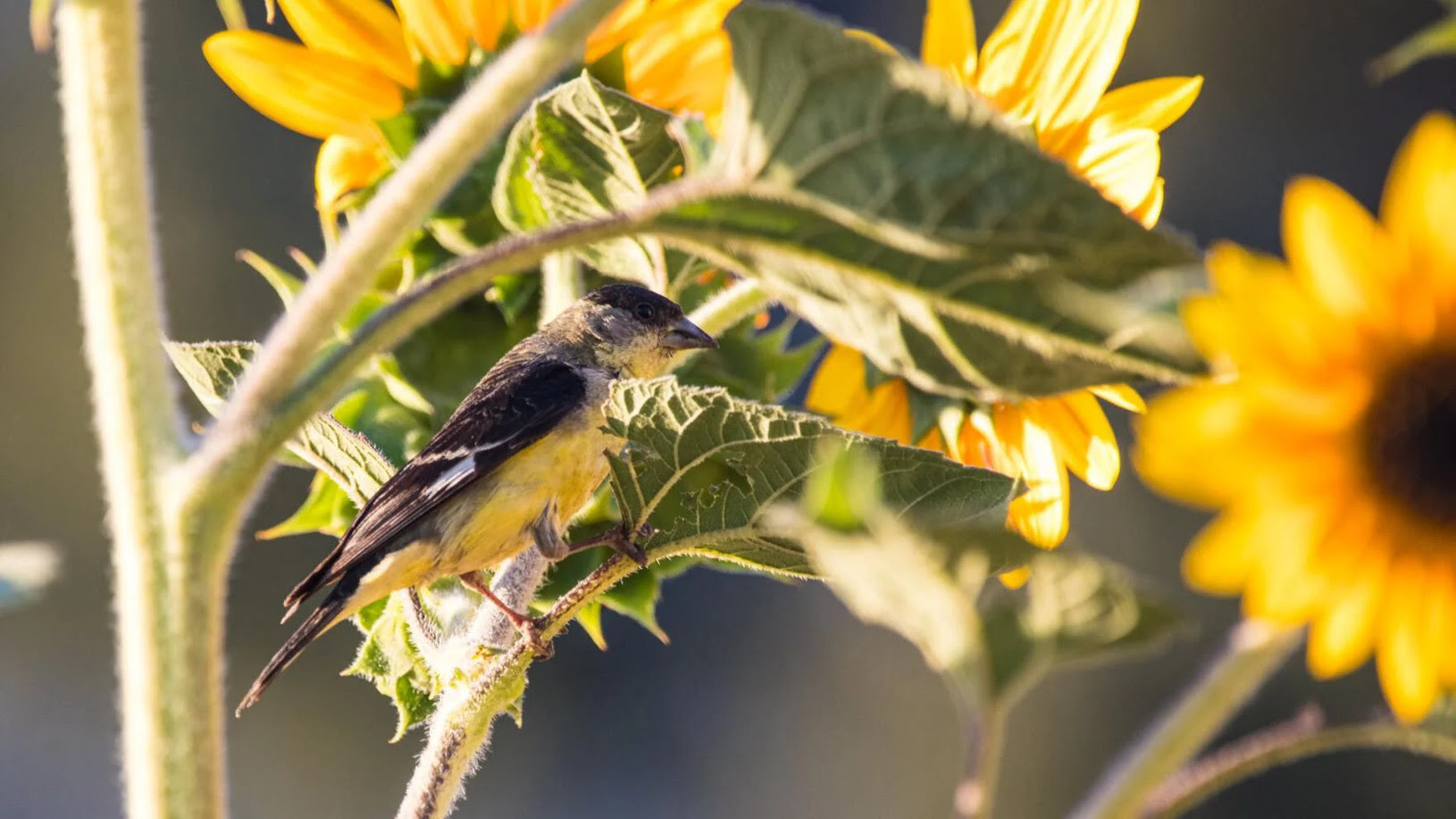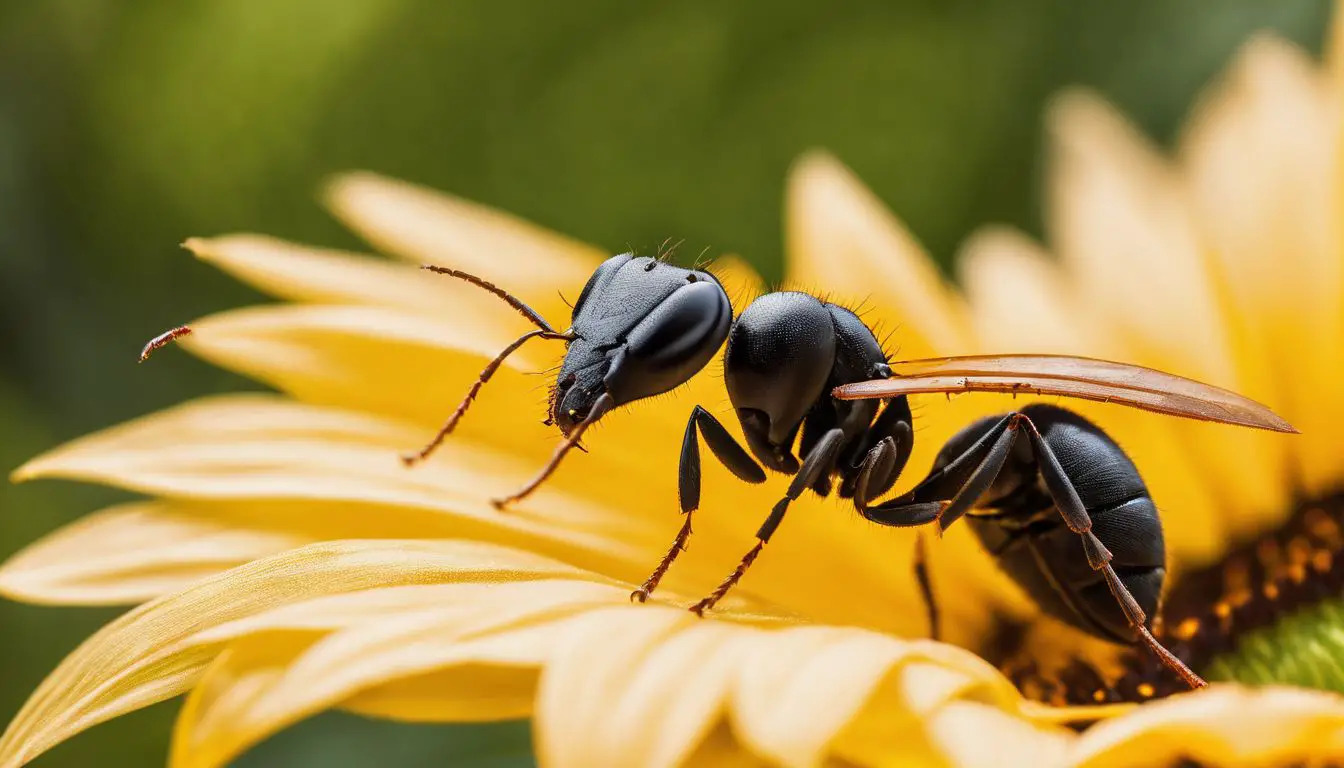Home>Gardening News and Trends>Latest News>What State Is The Primary Exporter Of Sunflowers


Latest News
What State Is The Primary Exporter Of Sunflowers
Modified: January 22, 2024
Check out the latest news on which state holds the title of primary exporter of sunflowers. Discover fascinating insights and industry updates in this article.
(Many of the links in this article redirect to a specific reviewed product. Your purchase of these products through affiliate links helps to generate commission for Chicagolandgardening.com, at no extra cost. Learn more)
Table of Contents
Introduction
Welcome to the world of sunflowers, where these vibrant and versatile flowers are not only admired for their beauty but also celebrated for their economic significance. Sunflowers are not just a popular addition to gardens and floral arrangements; they are also a major agricultural product with significant export potential.
The cultivation of sunflowers dates back centuries, with their origins in North America and their popularity spreading worldwide. These iconic flowers are not just visually striking; they also have numerous practical uses, such as in the production of edible oil, animal feed, and biofuel. Due to their versatility and economic value, sunflower production has become a vital industry in several states across the United States.
In this article, we will delve into the world of sunflower export and explore which states in the U.S. reign supreme as the primary exporters of sunflowers. We will examine the factors that contribute to their export success and analyze the leading states in terms of sunflower production and export. By the end of this article, you will have a clear understanding of the states that play a crucial role in the sunflower export market.
So, if you’re ready to embark on a journey through the sunflower fields of America, read on to discover the primary exporting states and their contributions to this thriving industry.
Sunflowers as a Major Agricultural Product
Sunflowers, scientifically known as Helianthus annuus, have gained significant recognition as a major agricultural product due to their numerous practical applications and economic value. These iconic flowers have captured the hearts of many with their large, yellow petals and distinctive center disk filled with tiny florets.
One of the primary uses of sunflowers is the production of edible oil. Sunflower oil is highly popular worldwide, known for its light flavor, high smoke point, and nutritional benefits. The oil is extracted from the seeds of sunflowers, which are rich in healthy fats, vitamin E, and antioxidants. The demand for sunflower oil in the culinary industry has contributed to the growth of sunflower production and export.
Sunflowers are also utilized in the production of animal feed. The residual seeds left after oil extraction, known as sunflower meal or sunflower seed cake, are a valuable source of protein and nutrients for livestock. This makes sunflower cultivation a crucial component of the agricultural industry, supplying feed for cattle, poultry, and other farm animals.
Beyond their use in the food industry, sunflowers have found their way into the biofuel sector. The seeds of sunflowers can be processed to produce biodiesel, a renewable and environmentally friendly alternative to traditional fossil fuels. The high oil content and availability of sunflowers make them an ideal crop for biofuel production, contributing to the sustainability efforts in the energy sector.
Furthermore, sunflowers have gained popularity in the floriculture industry. Their vibrant yellow petals make them a favorite choice for bouquets and floral arrangements. The beauty and cheerful nature of sunflowers have made them a symbol of happiness and positivity, further enhancing their market demand.
Given the diverse applications and increasing global demand, sunflower cultivation has emerged as a major agricultural industry. The economic benefits associated with sunflower production have prompted farmers and investors to focus on this crop, leading to the emergence of several key players in the sunflower export market.
Factors Contributing to Sunflower Export
Several factors contribute to the success and growth of sunflower export. Understanding these factors can provide valuable insights into why certain states excel in sunflower production and become primary exporters in the industry.
1. Geographical Advantage: Sunflowers thrive in regions with specific climate conditions. They require ample sunlight, warm temperatures, and well-drained soil. States that possess these optimal growing conditions, such as the Midwest and Great Plains regions, have a natural advantage in sunflower cultivation and are more likely to become major exporters.
2. Agricultural Expertise: The knowledge and experience of farmers play a crucial role in sunflower production. States with a long history of agricultural expertise and a robust farming infrastructure are better equipped to cultivate sunflowers. They have access to advanced farming techniques, efficient machinery, and a strong network of agricultural support services, ensuring higher yields and quality crops.
3. Research and Development: Ongoing research and development in sunflower breeding and genetics have led to improved seed varieties with higher yields and better resistance to pests and diseases. States that prioritize research and collaborate with agricultural institutions to develop superior sunflower varieties have a competitive edge in the export market.
4. Market Demand: The demand for sunflowers and sunflower-based products, both domestically and internationally, is a significant driver of export. Consumer preferences for healthy and sustainable products, such as sunflower oil and biofuels, contribute to the steady demand for sunflowers. States that can meet this demand efficiently and consistently are more likely to become primary exporters.
5. Infrastructure and Logistics: The presence of robust infrastructure, including transportation networks, storage facilities, and processing plants, is essential for efficient sunflower export. States with well-developed transportation systems and access to trade routes, ports, and railroads can seamlessly move sunflower products from farms to markets, ensuring timely delivery and maintaining product quality.
6. Government Support: Supportive government policies and incentives play a critical role in promoting sunflower export. States with favorable agricultural policies, research grants, subsidies, and trade agreements can create an enabling environment for farmers and exporters. This support encourages investment in sunflower production and export, driving growth in the industry.
These factors work in tandem to contribute to the success and prominence of certain states as primary exporters of sunflowers. While geographic advantages and agricultural expertise provide a foundation, research and development, market demand, infrastructure, and government support further propel these states to the forefront of the sunflower export market.
Evaluating the Leading States in Sunflower Exports
When it comes to sunflower exports, certain states in the United States stand out as leaders in the industry. These states have demonstrated consistent success in cultivating and exporting sunflowers, contributing significantly to the global supply. Let’s evaluate some of the leading states in sunflower exports:
1. North Dakota: North Dakota is often referred to as the “Sunflower State” due to its dominant position in sunflower production and export. The state’s favorable climate and agricultural infrastructure make it an ideal region for growing sunflowers. North Dakota consistently ranks at the top in terms of sunflower acreage, with a substantial portion of its harvest destined for export markets.
2. South Dakota: South Dakota closely follows North Dakota in sunflower production and export. With similar climate conditions and agricultural expertise, South Dakota has established itself as a key player in the sunflower industry. The state’s farmers have embraced sunflower cultivation as a profitable crop, meeting both domestic and international demand with their high-quality products.
3. Kansas: Kansas boasts a strong agricultural presence and is recognized as a leading sunflower exporter. The state’s fertile soils and favorable weather conditions contribute to the successful cultivation and high yields of sunflowers. Kansas has a well-developed infrastructure that supports the efficient transportation and export of sunflower products, solidifying its position in the market.
4. Minnesota: Minnesota, often associated with its abundance of lakes, is also a significant contributor to the sunflower export industry. The state’s agricultural expertise, research institutions, and supportive policies have propelled its sunflower sector. Minnesota’s farmers cultivate premium sunflower varieties, catering to both the domestic and international markets.
5. Nebraska: Known as the “Cornhusker State,” Nebraska has expanded its agricultural portfolio to include sunflowers. The state’s extensive farmlands and advanced farming techniques have allowed for successful sunflower cultivation. Nebraska’s strategic location and well-connected transportation networks facilitate the export of sunflowers to various destinations.
Other states, such as Colorado, Texas, and Oklahoma, also make notable contributions to sunflower exports. These states possess the necessary resources, expertise, and infrastructure to thrive in sunflower production and maximize their export potential.
It’s important to note that sunflower production and export can vary from year to year due to factors such as weather conditions, market demand, and crop rotation practices. However, the aforementioned states have consistently demonstrated their prominence in the sunflower export market, making them vital players in meeting global sunflower demand.
State-by-State Analysis of Sunflower Exporters
Let’s take a closer look at the leading sunflower exporting states and delve into their individual contributions to the industry:
1. North Dakota: As the primary sunflower exporter in the United States, North Dakota accounts for a significant portion of the country’s sunflower production. The state’s rich agricultural heritage, ideal climate conditions, and extensive sunflower acreage make it a powerhouse in the industry. North Dakota’s farmers have honed their cultivation techniques, producing high-quality sunflowers sought after by domestic and international markets.
2. South Dakota: South Dakota closely follows North Dakota in sunflower exports. The state’s fertile soils, ample sunlight, and effective farming practices have contributed to its success. South Dakota’s farmers have embraced sunflowers as a profitable crop, capitalizing on the strong demand for sunflower oil and other sunflower-based products. The state’s commitment to sustainable agriculture and reliable export channels have further solidified its position as a leading sunflower exporter.
3. Kansas: Known for its extensive farmlands and diverse agricultural output, Kansas has emerged as a significant sunflower exporter. The state’s favorable climate, research institutions, and supportive policies have encouraged farmers to cultivate sunflowers. Kansas consistently produces high yields of sunflowers that meet stringent quality standards. The state’s well-established transportation networks and storage facilities ensure smooth export operations, further contributing to its success.
4. Minnesota: Minnesota’s commitment to agricultural innovation and research has propelled its sunflower industry. The state’s farmers have adopted advanced farming practices and embraced the cultivation of premium sunflower varieties. Minnesota benefits from its proximity to major markets, allowing for efficient distribution and export of sunflowers. The state’s dedication to sustainable farming practices and high-quality sunflower products have positioned it as a leading exporter.
5. Nebraska: Nebraska has witnessed significant growth in sunflower production and export in recent years. The state’s farmers leverage its vast farmlands and favorable climate to produce a substantial sunflower crop. Nebraska’s commitment to agricultural research and development has resulted in improved seed varieties and enhanced farming techniques. The state’s central location and well-connected transportation infrastructure facilitate the export of sunflowers to both domestic and international markets.
While these states dominate the sunflower export market, other states, including Colorado, Texas, and Oklahoma, also contribute significantly to the industry. Each state brings its unique advantages, whether it be favorable growing conditions, agricultural expertise, or strategic geographical positioning. This diversity further enriches the overall sunflower export landscape.
The success of these states as sunflower exporters can be attributed to their ability to meet market demand consistently, maintain high-quality standards, and implement efficient supply chain management. Their dedication to sustainable farming practices and investments in research and infrastructure have allowed them to thrive in this competitive industry.
As the sunflower export market continues to evolve, these leading states will play a crucial role in meeting global demand and shaping the future of the sunflower industry.
Comparing the Primary Sunflower Exporting States
When comparing the primary sunflower exporting states in the United States, several key factors come into play. Let’s take a closer look at these factors to gain a better understanding of their similarities and differences:
1. Production Volume: One crucial aspect to consider is the production volume of sunflowers in each state. North Dakota consistently leads the pack, producing the highest number of sunflowers. South Dakota, Kansas, Minnesota, and Nebraska follow closely behind, with significant production outputs. However, the specific production volumes may vary from year to year, as they are influenced by factors such as weather conditions and market demand.
2. Acreage: The amount of land dedicated to sunflower cultivation also plays a role in the comparison. North Dakota typically has the largest sunflower acreage, followed by South Dakota and Kansas. Minnesota and Nebraska also contribute considerable acreage to sunflower cultivation. This significant land allocation reflects the states’ commitment to sunflower production and export.
3. Quality Standards: Maintaining high-quality standards is crucial in the sunflower export industry. All the primary sunflower exporting states prioritize quality control measures to ensure that their sunflower products meet market expectations. From seed selection to cultivation techniques and post-harvest practices, these states implement procedures to ensure consistent quality across their sunflower crops.
4. Market Reach: The ability to access and serve different markets is an essential consideration. North Dakota, being the leading sunflower exporter, typically has a vast market reach, supplying sunflowers to various countries around the globe. South Dakota, Kansas, Minnesota, and Nebraska also have established market channels, catering to both domestic and international demands. The ability to tap into diverse markets allows these states to maximize their export potential.
5. Value-Added Products: In addition to exporting sunflower seeds, some states have developed value-added products such as sunflower oil, snacks, and premium sunflower-based products. The production of these value-added products adds to the economic impact of the primary sunflower exporting states. States like Minnesota and Kansas have made strides in expanding their sunflower product offerings, capturing the attention of health-conscious consumers.
6. Sustainability Practices: As sustainability becomes increasingly important in agriculture, states are adopting practices that prioritize environmental conservation and resource efficiency. Several primary sunflower exporting states have implemented sustainable farming techniques, such as precision agriculture, crop rotation, and water management. By focusing on sustainability, these states ensure the long-term viability of sunflower production and minimize the impact on the ecosystem.
While there may be variations in production volume, acreage, market reach, and value-added products among the primary sunflower exporting states, they all share a commitment to the growth of the sunflower export industry. Their collective efforts contribute to the overall success and market dominance of the United States in the global sunflower market.
By maintaining high-quality standards, embracing innovation, and responding to market demands, these states continuously drive the growth and competitiveness of the sunflower export industry. Together, they have established the United States as a leading player in the global sunflower market.
Conclusion
The sunflower export industry in the United States thrives thanks to the contributions of several key states. North Dakota, South Dakota, Kansas, Minnesota, and Nebraska consistently lead the pack in sunflower production and export. These states possess favorable climate conditions, robust agricultural expertise, advanced farming techniques, and supportive infrastructures.
Through their commitment to high-quality standards, these states meet the demands of both domestic and international markets for sunflower products. Whether it’s sunflower oil, animal feed, biofuel, or floral arrangements, these states have established a reputation for delivering premium sunflower-based goods.
While each state has its unique strengths and competitive advantages, their success in sunflower export is propelled by factors such as geographical advantages, agricultural expertise, research and development, market demand, infrastructure, and government support.
As the sunflower export market continues to evolve, these primary sunflower exporting states play a vital role in contributing to the global supply of sunflower products. They not only support the economy through job creation and revenue generation but also contribute to sustainable agriculture practices and promote the versatility of sunflowers.
It’s worth noting that other states, including Colorado, Texas, and Oklahoma, also contribute significantly to sunflower exports, enhancing the diversity and richness of the industry. Together, these states uphold the reputation of the United States as a dominant player in the global sunflower market.
Looking ahead, it will be crucial for these primary sunflower exporting states to continue investing in research, innovation, and sustainability practices to strengthen their position in the industry. By staying attuned to market trends, consumer preferences, and evolving demands, these states can navigate the dynamic global landscape and maintain their status as leaders in sunflower exports.
The sunflower export industry not only showcases the agricultural prowess of these states but also highlights the importance of sunflowers in various sectors. From providing essential oils and animal feed to contributing to clean energy alternatives and brightening our living spaces with their vibrant blooms, sunflowers play a multifaceted role in our society.
As consumers worldwide continue to embrace sunflower-based products for their nutritional benefits, sustainability, and visual appeal, the primary sunflower exporting states will remain integral to the growth and success of the sunflower export industry.









